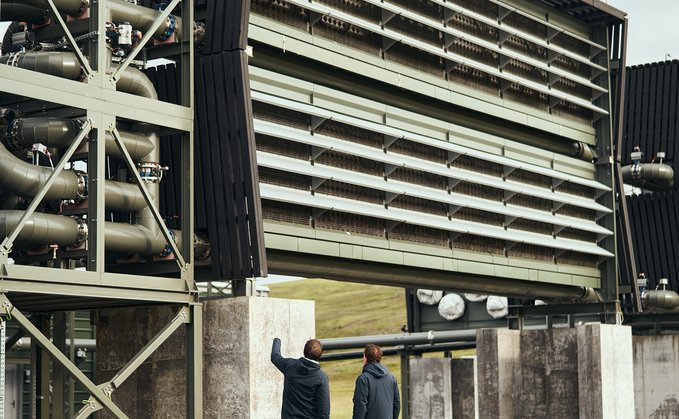Direct air capture (DAC), a method for removing carbon dioxide from the atmosphere, will be used in two pilot facilities that will be built at commercial scale by the US DOE.

Direct air capture (DAC), a method for removing carbon dioxide from the atmosphere, will be used in two pilot facilities that will be built at commercial scale by the US Department of Energy (DOE).
The $1.2 billion project is the first stage of a 10-year, $3.5 billion scheme for four hubs for the removal of carbon dioxide. However, environmentalists have attacked the concept, claiming that the adoption of DAC technology will give oil and coal firms permission to continue using fossil fuels since it is expensive.
130 DAC plants have been put into operation worldwide. However, when finished, the two facilities should be the biggest in the world, removing nearly 250 times more carbon dioxide than the biggest DAC plant that is now in operation.
US president Joe Biden’s infrastructure coordinator Mitch Landrieu referred to the infrastructure legislation that a bipartisan Congress enacted last year as “the largest investment in engineered carbon removal in history” when he introduced the US DAC initiative.
One of the pilot plants will be built by 1PointFive, a division of Occidental Petroleum, in Kleberg County, Texas, and the other by nonprofit research organization Battelle in Calcasieu Parish, Louisiana.
Occidental claims that its Texas operation would employ liquid sorbents to sequester up to 30 million tonnes of carbon dioxide annually in saline deposits, starting with one million tonnes annually. The firm hasn’t yet provided a timeline for getting going and attaining capacity. Meanwhile, the Louisiana facility will use solid sorbents with comparable sequestration capabilities.
“Reducing our carbon emissions alone won’t reverse the growing effects of climate change; we also need to remove the CO2 that we’ve already put in the atmosphere,” noted US energy secretary Jennifer Granholm.
“Nearly every climate model makes clear that this is essential to achieving a net-zero global economy by 2050.” With this once-in-a-generation investment, DOE is setting the groundwork for a direct air capture sector that is essential to combating climate change, while also altering local economies and bringing healthier communities.
However, not everyone shares that opinion. In a TED address he delivered before to the release, former US vice president and well-known opponent of the causes of climate change Al Gore called DAC technologies “a moral hazard” and said they provide fossil fuel manufacturers “an excuse for never stopping oil.”
Gore stated that the energy required for DAC would be greater than that required to stop the carbon dioxide emissions that the technology would stop.
On the other hand, proponents of the technology contend that DAC can work as a reliable backup solution for removing carbon as long as the amount of carbon in the atmosphere keeps rising. Actually, the DOE has stated that it plans to set aside almost $100 million for feasibility and design studies on 19 additional carbon removal projects.